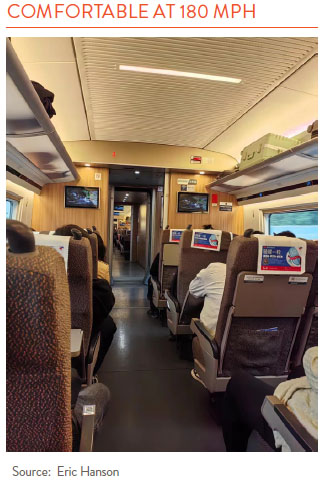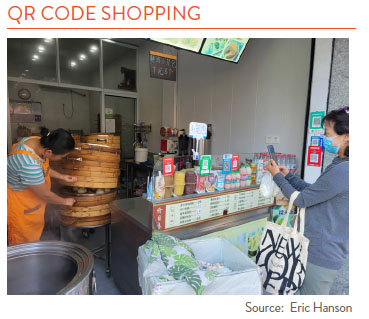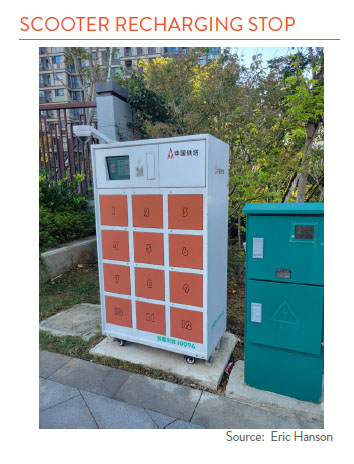In addition to living on the China coast in Zhoushan, Xin and I travelled over 2,200 miles inland by train, bus, and car. This is the equivalent of going from New York City to Salt Lake City. We got as far west as Xi’An and as far north as Yan’An, the headquarters of the Communist army in the 1930s. Here are some observations.

China infrastructure is incredibly developed. Auto expressways between cities are common and driving speeds are similar to our interstate system. And the high-speed rail system continues to astonish. Started in 2008, China has built out a network of over 26,000 miles of trains which run between 120 and 180 miles per hour. A train trip from Xi’An in the West to the coast takes nine hours at a speed of 180 miles per hour and costs $110. The equivalent trip on Amtrak between New York and Chicago costs about the same but takes 20 hours, twice as long. High-speed trains are so convenient in China, there was little reason for us to suffer the hassles of airports and air travel.
It is difficult being a foreigner travelling on your own in China. English has been deemphasized on the all-important college entrance exam, and we found very little English spoken. In addition, your passport is necessary almost everywhere for security checks. Whereas the Chinese can use automated kiosks for buying tickets, etc., foreigners need to go to a special window, costing extra time. Finally, foreigners do not have easy access to China’s cell phone-based payment system, and Western credit cards are only useful at the highest end stores. Cash is an option, but some stores are not even taking that anymore.
The China payment system is built around two platforms, Alibaba (Alipay) and Tencent (Weixinpay). Customers set up accounts with them (most people have both), tie their bank accounts to them, and then scan a QR code when making purchases (see picture). There is no fee for this (the companies make their money investing the funds you have on deposit with them), and for the retailer, there is no need for registers, or in some cases, for cash or extra workers. It is a fast and efficient system, but it is very difficult for foreigners to get a bank account in China.


A final observation is the electrification of transport. High speed trains are all electric and most in-city buses are also. The biggest change recently is in electric vehicles and scooters. Parking is a big problem in China and electric scooters have become the quick, easy way to get around. A typical scooter for a food delivery person or a grandparent delivering a grandchild to school might cost $700, and there are cheap charging stations in residential areas (see picture).
China is rapidly developing electric vehicles. There are over 20 companies with plans for models. It feels like the early days of the gasoline engine in the U.S. when you didn’t know who the survivors were going to be. Tesla has a factory in Shanghai, and they are the market leader at the high end. China is learning from them fast, however. At the lower end BYD is the leader. I was told there are “many” models selling for under US $20,000. The Chinese have a 30% production cost advantage over Western companies today, and analysts have been surprised and impressed by how sophisticated the Chinese e-car software is. Ten years from now it would not surprise me if China were the dominant global e-car maker.